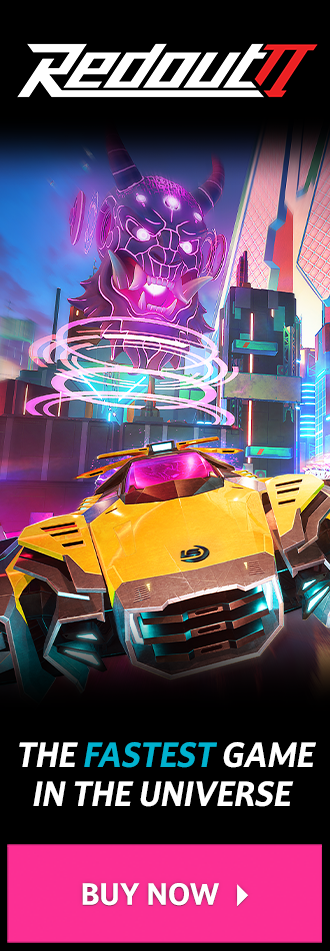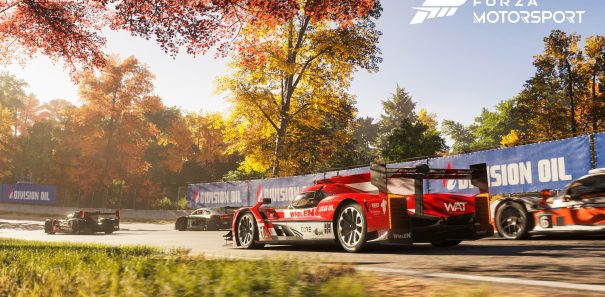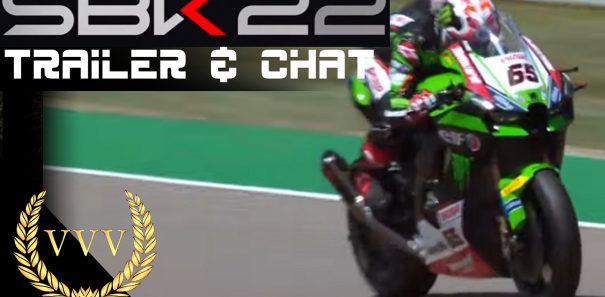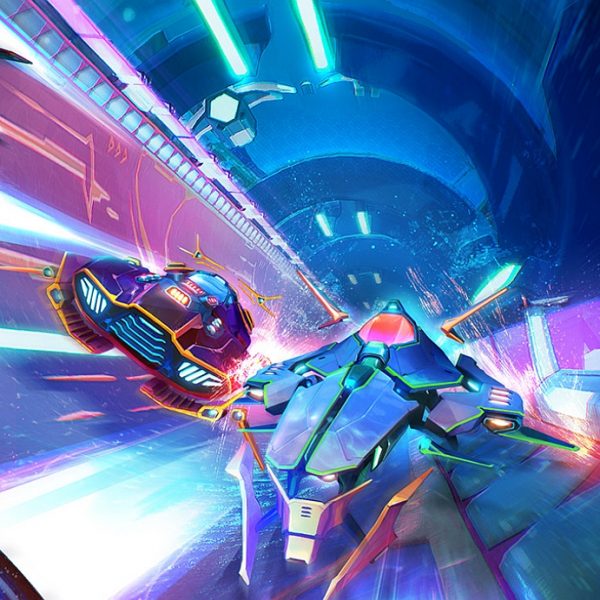I’ll admit it: when it was announced last year that French firm Kylotonn Games were handling the fifth entry in the WRC game series following Italian studio Milestone’s four year reign, I feared the worst.
Forgive my cynicism, but trawling through their back catalogue doesn’t exactly fill you with confidence – this is the same developer responsible for the monumentally woeful Motorcycle Club, after all. Handing the WRC license to a developer with a poor track record and no prior experience with rally games seemed like a surefire recipe for disaster. The uninspiring announcement trailer didn’t help either, presenting a game that had the makings of a substandard budget title.
But then came the surprise announcement that Kylotonn had enlisted former SimBin and Eden Games developers to oversee WRC 5, whose combined credits include respected racing IPs such as V-Rally, Test Drive Unlimited and GTR.
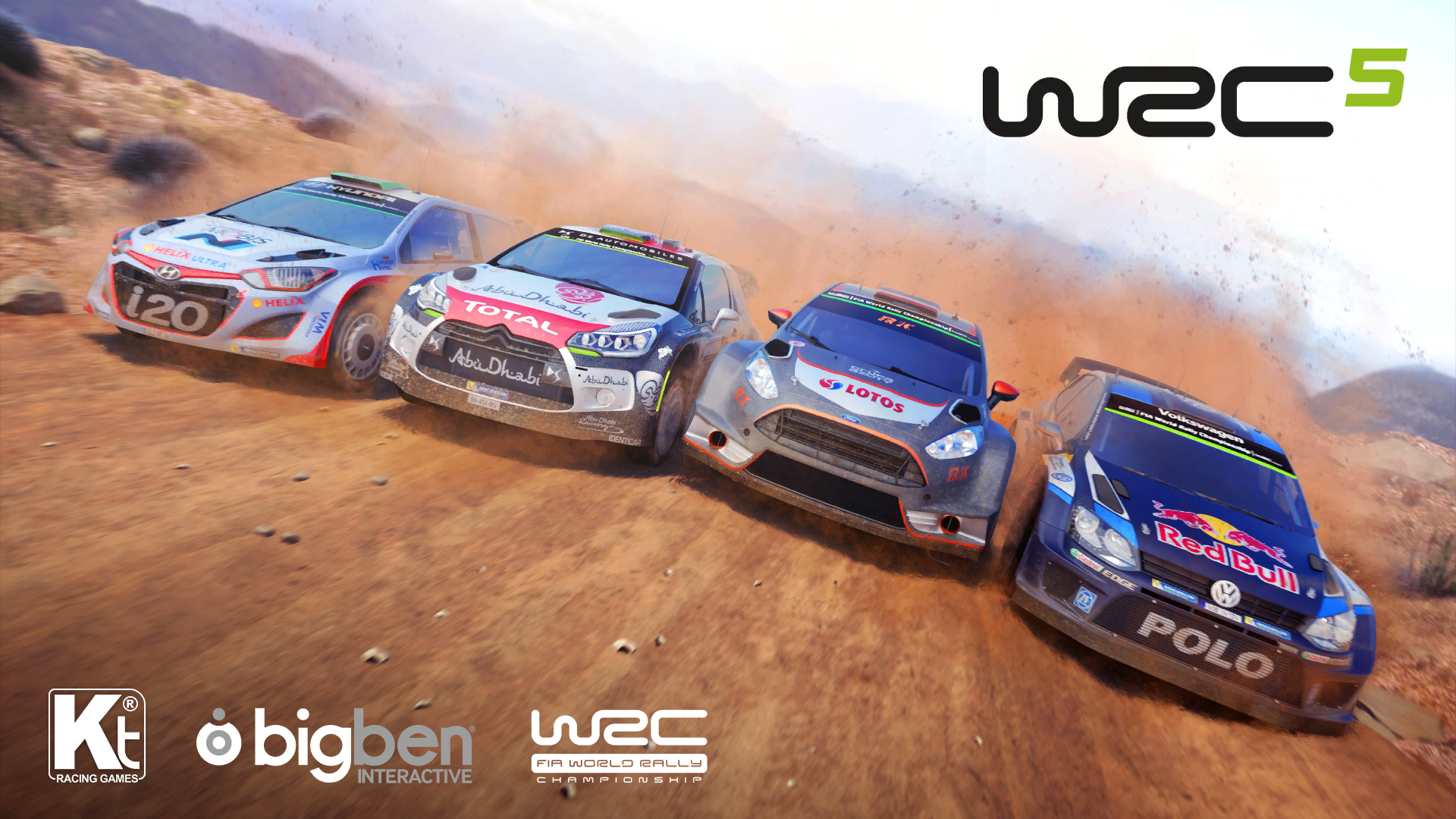
Granted, budget restrictions meant that WRC 5 was never going to pose a threat to Project CARS, Forza Motorsport or DriveClub, but with proven racing talent on-board came renewed optimism that WRC 5 might not be the unmitigated disaster it was set out to be.
WRC 5’s timing seemed ideal too: it’s been two years since Milestone’s WRC 4 slid onto the scene for last-gen consoles, and the PS4 has been completely starved of rally games ever since, paving the way for the WRC series to make its current-gen comeback.
Unfortunately, time hasn’t been kind to WRC 5. While the WRC series has held its own in recent years with no other rally games stalking its slipstream, this year WRC 5 found itself sandwiched between some serious competition.
This year the rally game landscape changed significantly with the release of the highly acclaimed DiRT Rally, a thoroughbred rally simulation hailed as a return to form for Codemasters who had been guilty of dumbing down the DiRT series instead of embracing their rally heritage that dates back to the glory days of Colin McRae Rally.
For now though, DiRT Rally’s exacting take on the sport is an exclusive experience for PC players (at least until next April when it hits PS4 and Xbox One), so WRC 5 at least has the advantage of being widely available on all formats to fill the gaping void of console rally games. That is until the imminent release of Sebastien Loeb Rally EVO, a promising project developed by former WRC developer Milestone that’s gearing up to be a solid package for rally enthusiasts, with its passionately recreated stages, sumptuous visuals and a variety of classic and contemporary cars and game modes that the restrictions of a licensed game like WRC simply can’t compete with.
It’s a welcome resurgence in a genre that’s been lacking standout games comparable to Colin McRae Rally and Richard Burns Rally in recent years, but a less than ideal scenario for Kylotonn. Indeed, the odds already seem stacked against WRC 5: Milestone and Codemasters have decades of experience between them developing rally games, whereas Kylotonn are newcomers to the genre.
Can WRC 5 fend off its big budget competitors or does it get lost in their dust trails?
Hard Drivin’
Comparisons to DiRT Rally are inevitable, but what isn’t initially obvious is that WRC 5 is reaching out to a completely different audience. Whereas DiRT Rally is a demanding drive designed for hardcore players, WRC 5 is far more forgiving, giving you generous grip that encourages you to confidently chuck the car into corners with a smirk on your face – you instantly feel like a champion within minutes of picking up the pad. It’s a more playful take on rallying than Milestone’s slightly po-faced efforts, and it’s all the better for it. Finally, for the first time since Evolution’s take on the license back in the pixelated PS2 days the series has regained its sense of fun; something that’s often lost in developer’s obsessive quest for realism in modern racing games.

That’s not to say there isn’t any nuance to WRC 5’s driving. Kylotonn have done a commendable job making the handling accessible yet authentic, allowing you to apply driving techniques used by real rally drivers. Managing the body roll to oversteer into corners and correcting the car back into shape feels natural, yet you don’t need to understand the intricacies of weight transfer to maximise your times.
The developer’s previous experience with V-Rally shows, as WRC 5 mimics its pick up and play style. And that’s just fine: with DiRT Rally’s hardcore handling catering for the simulation crowd and no sign of SEGA Rally making a comeback any time soon, there’s definitely room in the market for the breed of casual rally game that used to saturate the market. It’s hard to imagine a time where we had several unique rally game IPs to choose from year after year now.
On a pad, WRC 5 feels responsive, intuitive and, crucially, fun to play. On a wheel however, WRC 5 fares less well – it’s obvious the developer’s intended WRC 5 to be primarily played with a pad. Until recently, WRC 5’s wheel support has been extremely limited on consoles to the extent it wasn’t compatible with any Xbox One wheels. The long-awaited patch update released some six weeks after release has since rectified this issue and extended wheel compatibility to other manufacturers, but PS3 users are still waiting for an update.
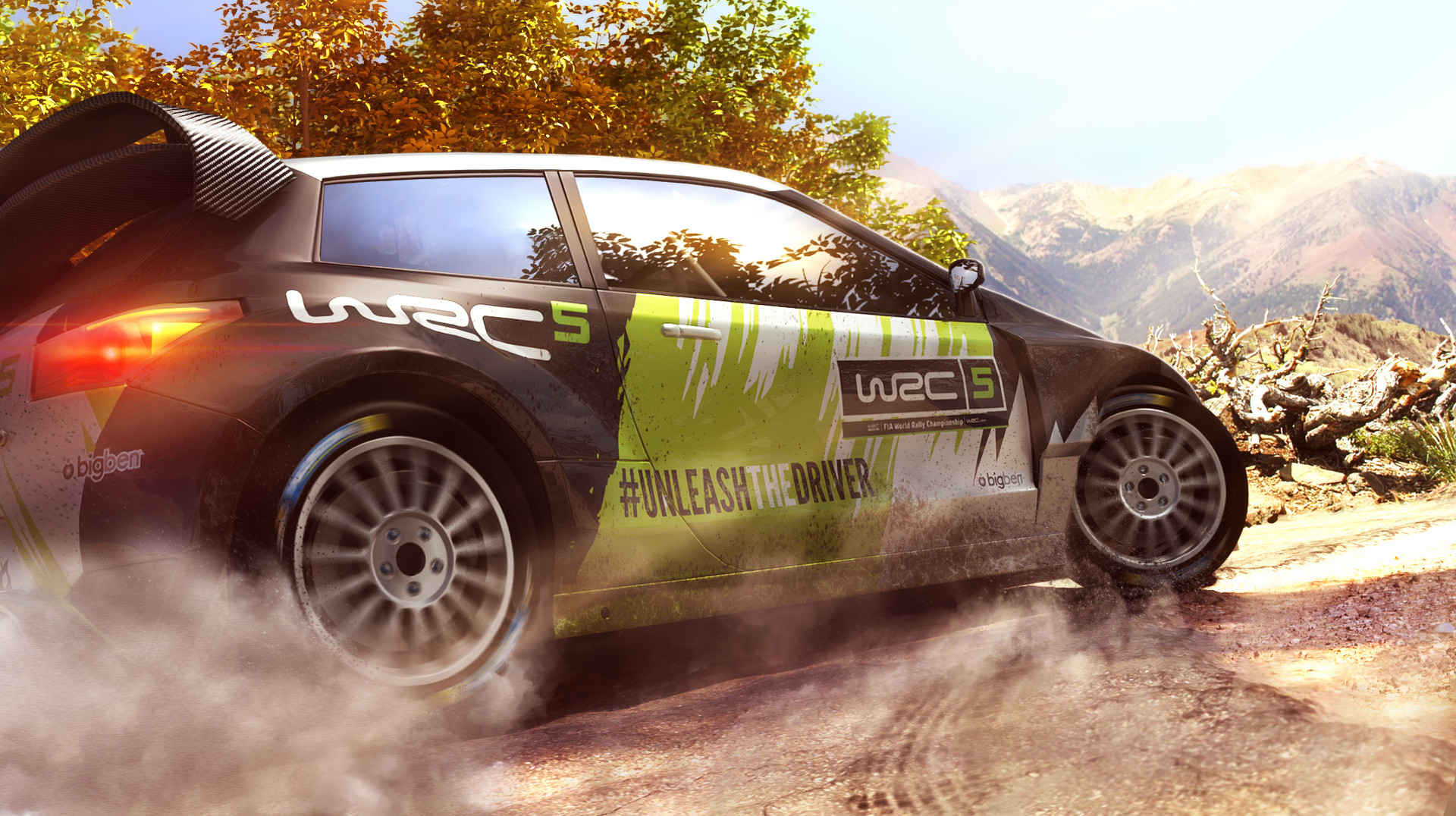
Playing WRC 5 on PS4 with a Thrustmaster T300 leaves a lot to be desired. Initially, the steering feels too twitchy, but this can be resolved by adjusting the steering sensitivity settings accordingly. Meanwhile, the flaky force feedback causes the handling to lack feeling – you can feel the bumps when you land a jump, but you never feel like the car is truly connected to the surface.
It’s improved since the release of the first console patch, but the force feedback still lacks refinement. I’ve struggled to find a sweet spot in the options – feedback strength feels either too light or too heavy between the different settings. I found WRC 5 plays best set to 540 degrees of rotation and reduced force feedback, but it’s worth experimenting to find your preference.
Issues with wheel compatibility don’t end there. Prior to the patch, button mapping was problematic as the game refused to let me program a custom button for the handbrake as I found its default position awkward to reach. This has now been resolved, but you still can’t switch between a controller and wheel without having to restart the game.
License to drive
For the first time in years, WRC 5 includes a helpful rally school teaching you the techniques of rallying at all skill levels, presenting you with short challenges where you have to stick as close to the racing line as possible during a series of driving challenges. There are over 40 in total that play out like Gran Turismo’s license tests.
Rallying requires a decidedly different, technical driving style to track racing, so it’s surprising that recent rally games haven’t featured rally schools despite it being a memorable feature in the original Colin McRae Rally. It’s all part of WRC 5’s attempt to make rally games appeal to a wider audience, and on that front it’s a resounding success.
Having said that, the increasingly difficult tests prove to be quite punishing, as straying from the racing line often results in instant failure. Some insight into the co-driver commands would also have been beneficial for newcomers. Fortunately they’re not mandatory, so you can just stick with the first few tutorials that teach you the basics and press on with the career.
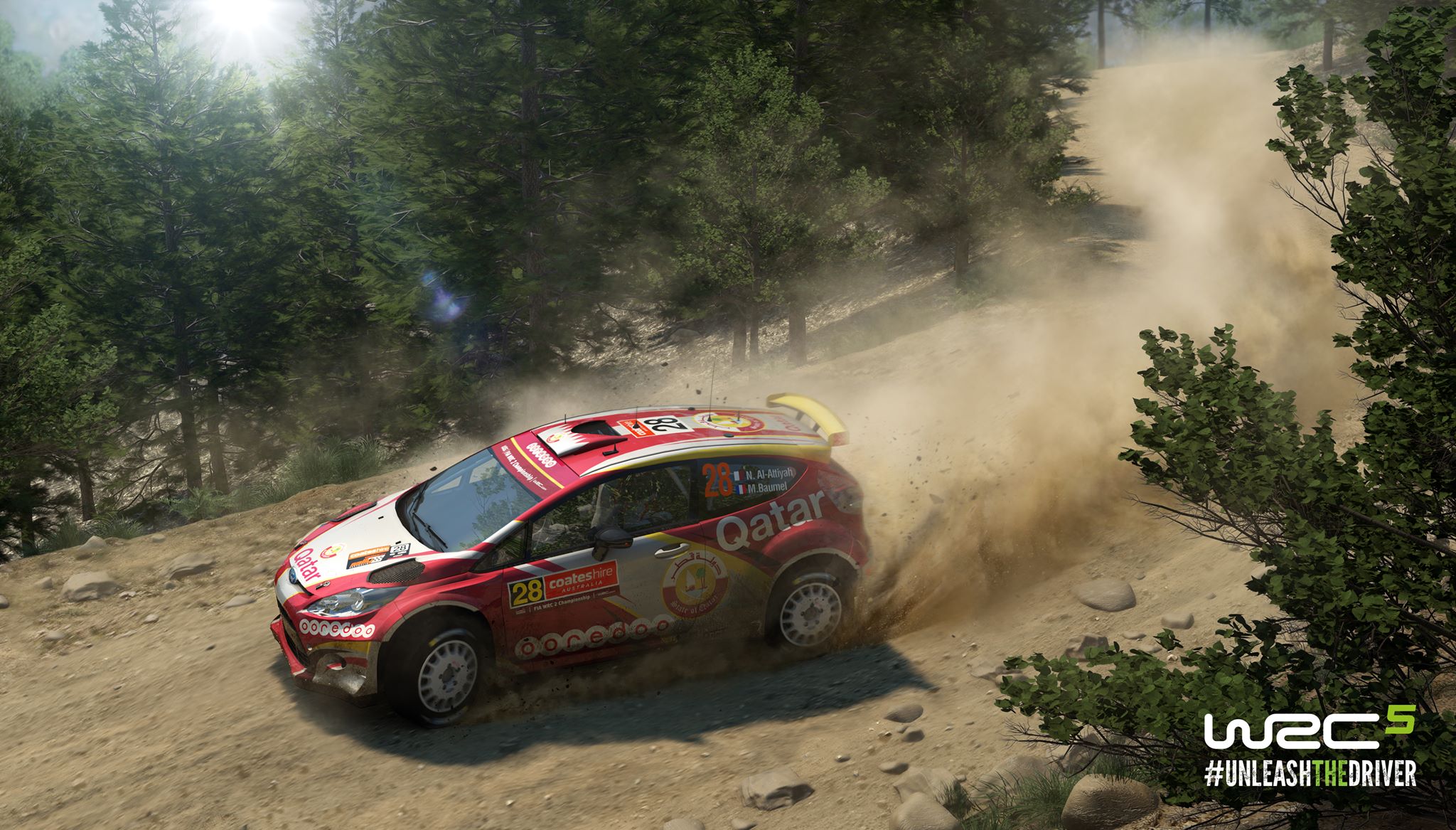
There’s a downside to these attempts at accessibility though, as WRC 5 lacks the authenticity you’d expect from a licensed motorsport game. With the exception of the snow-swept Sweden and Monto Carlo tracks where the challenging confines are a characteristic of the locations, the majority of courses are noticeably wider and shorter than their real life counterparts. Most stages can be finished in as little as three to five minutes, with some shorter stages taking barely more than a minute and a half to complete. Milestone’s Sebastien Loeb Rally EVO could have the edge here with its painstakingly recreated rally stages mirroring real life.
WRC 5’s stages may not be carbon copies, but they’re still well designed with a potent variety of corner types, scenery and mixed terrain that stay faithful to the locations, from the gentle gravel tracks of Poland to the treacherous icy banks of Monte Carlo. There’s less of the blatant copy and pasting of assets evident in Milestone’s WRC games which gives them a more natural flow, and unlike previous games in the series you can feel a tangible difference in traction across the various surface types when your tyres are treated to tarmac, gravel, sand or snow.
Night rallying also makes its belated debut in WRC 5 after being curiously absent throughout Milestone’s WRC games, with reduced visibility transforming stages tenfold. Throw in some rain weather effects, and you soon experience WRC 5 at its most thrilling and challenging as you battle against the elements.
Despite its forgiving arcade nature, WRC 5 can be very punishing when you inevitably misjudge a corner and smack into the nearest tree. Convincing cosmetic dents and scratches can make your previously pristine car unrecognisable by the time it limps across the finish line, while well-executed mechanical damage has a profound effect on the handling. Gears get stuck as the gearbox crunches and clatters, wrecked suspension causes the steering to crab, and in severe cases the engine cuts out completely, forcing you to retire.
Alternatively you can use rewinds to recover, but there’s a catch: compared to DiRT and Milestone’s WRC games, WRC 5 shakes up the formula by placing you back at checkpoints at a stopped start instead of letting you correct your mistakes with instant rewinds. It effectively penalises you for rewinding, but it makes you less complacent with your driving by removing the safety net of being able to instantly correct your mistakes without consequence. Adjusting the level of difficulty limits your number of restarts.
Sustained damage can be repaired at the service park, but you’ll need to be considerate with your repair choices. Resources are time-restricted, and going over your allotted time incurs time penalties, so it’s wise not to spend all your resources repairing the bodywork and prioritise the gearbox, brakes and suspension depending on the severity of the damage. It adds a welcome element of strategy to the otherwise barebones career mode in addition to tuning your car to suit the terrain.

It’s a pretty basic damage management system, granted, but it’s a balancing act that’s in-keeping with the spirit of the sport, forcing you to temporarily patch your car up just enough to survive the next stage and soldier on before the next repair interval. Since repairs can only be made every two or three stages, you’ll find yourself driving cautiously as damage accumulates – you’ll curse if you get lumbered with a crippled car stuck in third gear with two thirds of the stage still remaining. Performing well also helps boost your team’s morale, which subsequently allocates more time for repairs.
It’s a shame that repair management is relegated to WRC 5’s career mode. You can participate in single stages or map out a calendar of full six stage rallies in chosen locations outside the career, but your car magically repairs itself after each stage, making the multi-stage rallies rather redundant. It’s ideal for casual players but frustrating for those who want to jump straight into the higher car classes and get an authentic rally experience.
As always, WRC 5’s career mode has you work your way up negotiating contracts, advancing seasons and rising the ranks from the subdued Junior cars before progressing to WRC 2 and WRC, but there’s little else to keep you immersed.
Besides repairs, there’s very little interaction with your team at the service park beyond checking their morale through basic text menus which is affected by your performance and no objectives to aim for. WRC 5 doesn’t get bogged down with team management which is a blessing for the casual audience it’s aiming for, but WRC veterans may be left wanting more depth.
Being a licensed game, WRC 5 contains all the official cars and 13 real world locations from the 2015 championship, each containing five separate stages with different times of day. It all helps create a sense of journey integral to rallying, starting a location at dusk and finishing at night. With 65 stages in total, there’s plenty of replay value for driving purists, but there isn’t any live action footage of the real life WRC to contextualise the career and immerse you into the world of rallying. The only connection to the real life championship is the voiceover work provided by WRC Radio Live host Bec Williams and a series of facts and figures sprawled across the loading screens.
Cheap and cheerful
WRC 5 makes no attempt to hide its modest budget. Gone is the lavish presentation of Milestone’s WRC games dazzling you with live action footage in every menu: instead you’re presented with a rudimentary, minimalist menu that’s clean but a bit blan. Still, at least they load faster than the bloated WRC games of the past.
Unfortunately, Kylotonn have inherited some of Milestone’s bad habits when it comes to sterile presentation. Stages are too sparse and lacking in fine detail, and while there are some nice visual flourishes such as real-time reflections, sun glare that emits light cascading through trees, dense foliage and smudges of dirt peppering the windscreen and bodywork, the terrain texture quality lacks the pop and polish you’d expect from a current-gen game. Likewise, the uninspiring replay cameras fail to replicate the rousing atmosphere of the TV broadcasts.
Without dense crowds cluttering the stages or ambient sound effects to compliment the drone of your engine, there’s a depressing lack of atmosphere in WRC 5 when navigating the lifeless stages: where are the suicidal spectators cheering you on and getting as close as they dare to get an action shot before dashing from your oncoming car?
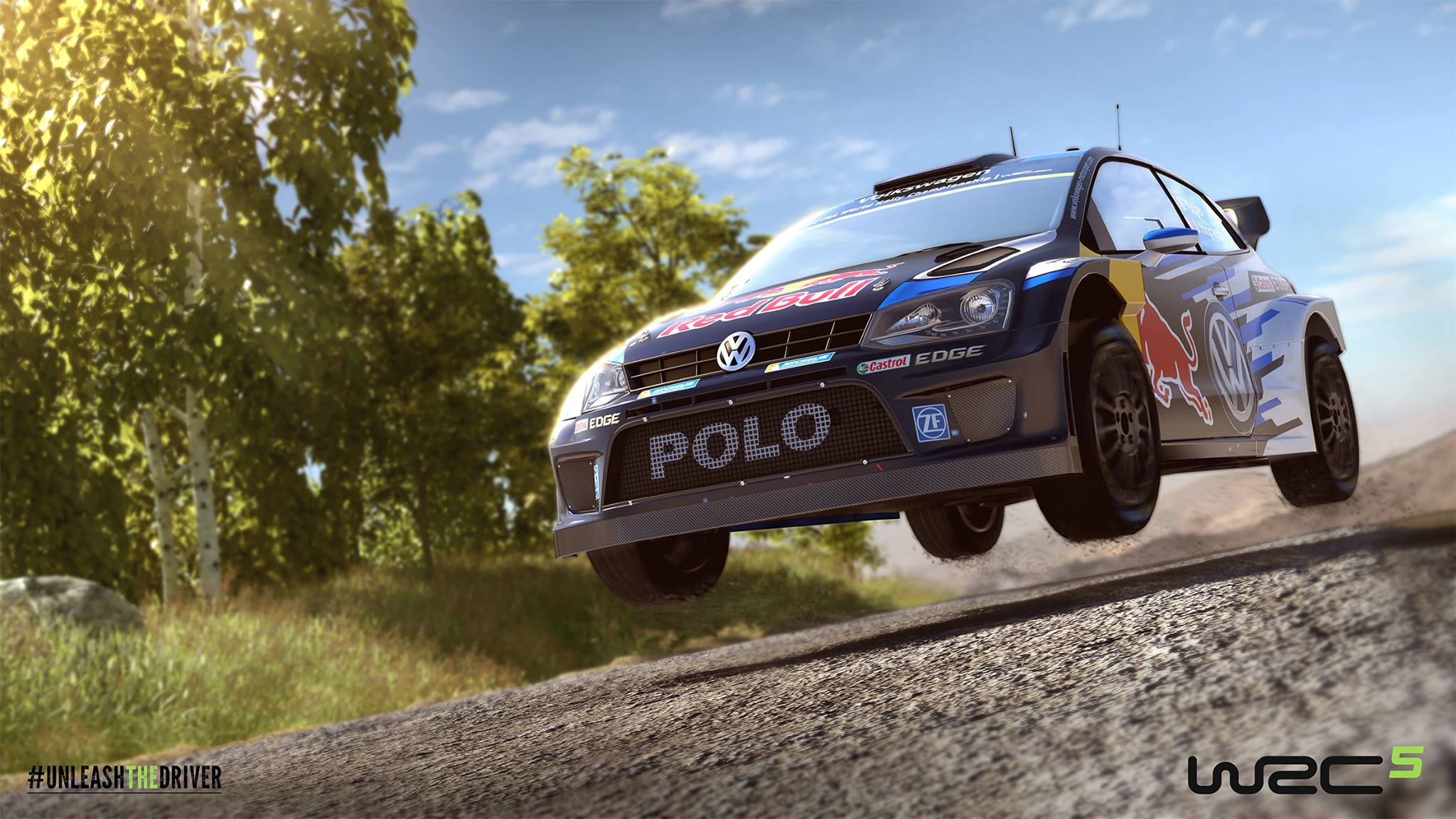
Compounding this sense of isolation is the lack of staggered starts (seriously, why is DiRT still the only rally game to simulate this?) with other rally drivers, leaving you with no sense of competition. Part of the thrill of past rally games is being constantly compared to other drivers, with split time checkpoints reminding you that you’re tenths of a second behind the fastest time to push you push harder, but this intensity is sorely lacking in WRC 5. It’s likely this was enforced to reflect changes in this year’s championship, but an option to reinstate split times in WRC 5 would have been nice. There are checkpoints, but these are reserved for the aforementioned rewinds.
It’s also surprisingly easy to finish first place – I often found myself finishing around a second faster than competitors regardless of my driving, which makes you wonder if the times are rigged to reduce the difficulty. Yes, WRC 5 is designed to ease players into rallying, but this is perhaps taking it a step too far.
A number of technical hitches also take the shine off WRC 5’s already unpolished exterior. Texture pop-in and distracting screen tearing is all-too-frequent, while fences that were once deformable in previous WRC games are now solid. And yet distant trees that are supposed to be solid can be driven through (admittedly I discovered this glitch after accidentally driving miles off course).
But it’s the erratic frame rate that causes the biggest puncture. WRC 5’s frame rate fluctuates between 30 and 60fps, but performance varies across each stage: some stages run at a smooth 60fps, yet others, such as the dense forests of Finland, frequently stutter, which also impairs the fluidity of the controller response. It’s particularly inexcusable in point to point rally games that don’t have to handle the strain of multiple AI drivers. Usually this allows developers to crank up the visual fidelity, but Kylotonn clearly didn’t have the budget to take advantage in WRC 5. Predictably, then, in terms of visuals WRC 5 wallows in DiRT Rally and Sebastien Loeb Rally EVO’s tyre smoke. I’d even hesitate to call it an improvement on WRC 4 on PS3.

The audio lacks similar refinement, with tinny engines that sound more like food blenders than souped-up rally cars. Engine sounds are particularly poor when driving with the cockpit view (the closeness of the cockpit cam can be adjusted, for those who are fussy like me) – driving with the external or bonnet camera offers a marginal improvement with novel touches such as audible exhaust popping, although it’s a tad excessive.
But by far the worst offender in the audio department is the robotic co-driver, who spouts out their pacenotes with all the charisma of a supermarket self-service checkout. Sound bites of individual words have obviously been crudely cobbled together rather than recorded specifically for each stage, and the coherence of the commands suffers as a result. In short, the co-driver’s predetermined commands sound woefully unnatural – the closest comparison that comes to mind is the cringe-worthy commentary in Formula One 2001.
The bumbling co-driver is also frustratingly unreliable, often stumbling over their pacenotes and delivering them out of sync with your track position (you can toggle the delay of the co-driver’s commands, but it doesn’t seem to have any effect). It’s enough to drive you to despair and deliberately drive into walls to damage your car’s electrics just to shut him up.
Online multiplayer features hot laps against up to eight ghost players, but it gives WRC 5 a competitive edge that’s missing from the single player. The colourful ghosts can be quite distracting however, which isn’t ideal for rallying when you have to concentrate on the route, and you spend a lot of time waiting in lobbies as the game doesn’t start until every player is marked as ready.
Ironically, WRC 5’s multiplayer works best when you’re not competing with other live players. Weekly DriveClub-style timed challenges and novelty Shakedown challenges help shake up the formula and keep you coming back, challenging you to complete stages without using the handbrake, for example. Judging from the real time countdown greeting you at the home menu, Kylotonn are clearly banking on the series’ eSports debut to keep players hooked on WRC 5’s online multiplayer when it launches next year however, with online events running parallel with the 2016 WRC championship starting in January.
Better luck next season
In hindsight, making WRC 5 a direct sequel to Milestone’s established series probably wasn’t a wise mode. The fact is, many elements of WRC 5 aren’t a significant leap from WRC 4 released two years ago on last-gen consoles, despite its improved stages, accessible handling and the introduction of night rallying. Ultimately, budget is most likely to blame, sadly.
To be fair to Kylotonn, this was their first WRC game developed from scratch. Considering they’ve had to develop a brand new engine on a paltry budget in a short space of time when they could have easily borrowed existing assets from previous games, the team have done a commendable job with the mammoth limitations. But with more time, budget and publisher backing, WRC 5 could have been something special rather than a merely passable rally game. It’s a shame, because WRC deserves more resources poured into it, but its dwindling exposure suggests the sport is far past its heyday.
Previous developer Milestone were in a similar situation back in 2010 when they first acquired the WRC license and had to develop new assets from scratch. Their first WRC game was clearly a product of rushed development, but over four years they learnt from their experience, listened to feedback and improved with each iteration, producing solid if unspectacular WRC games by the time they reached game number four. No doubt we’ll see a similar pattern if Kylotonn retain the WRC license, so expect next year’s inevitable annual sequel to improve on the groundwork achieved in WRC 5.
And therein lies the problem with WRC 5: like F1 2015, you can’t shake the feeling it was designed as a foundation for future games to build upon. Considering this is Kylotonn’s first foray into rally gaming developed on a small budget, the end result is a solid package that’s exceeded expectations, but we’ve yet to see the developer at their full potential.
WRC 5 is an enjoyable rally game that sets itself apart as an approachable alternative to its more serious competitors, but it lacks the depth and polish seasoned WRC fans expect from an officially licensed game. WRC 5 can safely be filed under “fun but flawed,” but it’s an encouraging start for a new generation of rally games nonetheless, and there’s plenty of scope for the series to evolve and improve in future iterations.
Our Review
Summary
WRC 5 is an enjoyable rally game that sets itself apart as an approachable alternative to its more serious competitors, but it lacks the depth and polish seasoned WRC fans expect from an officially licensed game. WRC 5 can safely be filed under “fun but flawed,” but it’s an encouraging start for a new generation of rally games nonetheless, and there’s plenty of scope for the series to evolve and improve in future iterations.



